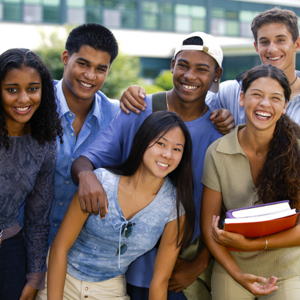
When the unexpected happens, will your child know what to do? Disaster can strike anywhere, usually with little to no warning. If your child is put in an emergency situation and doesn't know how to react, they could be severely hurt and may even feel significant anxiety that can follow them for years. Preparing youth for emergencies and disasters is crucial to ensuring their safety and well-being. Here are some steps you can take to educate and prepare children for emergencies:
Preparing Our Youth
Ultimately, it takes the whole community to educate our youth through preparedness tips and advice. With everyone doing their part, children will understand the seriousness of an emergency situation and strive to become leaders in their classrooms and neighborhoods, ensuring that everybody is prepared for the next disaster. The Federal Emergency Management Agency (FEMA), the American Red Cross and the Department of Education have worked together to create the National Strategy for Youth Preparedness Education, a document that outlines a vision for prepared youth in the United States, and how communities can turn that vision into a reality. This document seeks to educate youth and their parents so that communities are better able to prepare for, respond to and recover from future disasters.
How to Prepare Youth for Emergencies and Disasters with Nine Steps
Teach them about different types of emergencies: Explain the various types of emergencies and disasters that can occur in your area, such as natural disasters (earthquakes, floods, hurricanes) or human-made emergencies (fires, power outages). Help them understand the potential risks and how to respond.
Create an emergency plan: Develop a family emergency plan that includes specific instructions on what to do and where to go during an emergency. Involve your children in the planning process, discussing evacuation routes, meeting points, and communication strategies. Make sure they understand the plan and their roles in executing it.
Practice emergency drills: Conduct regular emergency drills at home, including fire drills and simulated evacuations. Practice different scenarios to familiarize children with the actions they need to take in each situation. This repetition helps build confidence and ensures they know what to do during an actual emergency.
Teach basic first aid: Introduce age-appropriate first aid skills to children, such as how to recognize common injuries, perform CPR, and stop bleeding. Enroll them in first aid and CPR classes designed for their age group, if available.
Assemble an emergency kit: Involve your children in assembling an emergency kit that includes essential supplies like water, non-perishable food, flashlights, batteries, a first aid kit, and personal items. Explain the purpose of each item and how they can be used during an emergency.
Educate about emergency alerts and communication: Teach children how to receive emergency alerts and warnings, whether through local radio, TV, or smartphone apps. Show them how to communicate with family members and emergency services during an emergency, emphasizing the importance of staying calm and providing relevant information.
Address fears and concerns: Children may have fears and anxieties related to emergencies and disasters. Encourage open communication and create a safe space for them to express their concerns. Reassure them that you are there to keep them safe and emphasize the preparedness steps you've taken as a family.
Involve schools and community organizations: Collaborate with your child's school and community organizations to promote emergency preparedness programs and activities. Encourage schools to conduct drills and incorporate preparedness education into their curriculum.
Lead by example: Serve as a role model for your children by practicing what you preach. Demonstrate preparedness behaviors, such as maintaining an emergency kit, staying informed about potential hazards, and being proactive in emergency planning.
Remember, age-appropriate information and discussions are essential when preparing youth for emergencies. Tailor the level of detail and complexity of the preparedness activities to match their understanding and capabilities. By taking these steps, you can help empower youth to respond effectively in emergency situations and promote a culture of preparedness within your community.
By implementing these nine priority steps in your community, your children can receive training to help them feel confident when faced with a disaster. Giving them the tools they need to understand how to prepare for, respond to and recover from several types of emergencies – from fires to floods and more – can make all the difference when disaster actually strikes. For more information about youth preparedness, as well as how you can get involved with the National Preparedness Community or start your own youth preparedness program, visit ready.gov/youth-preparedness.


